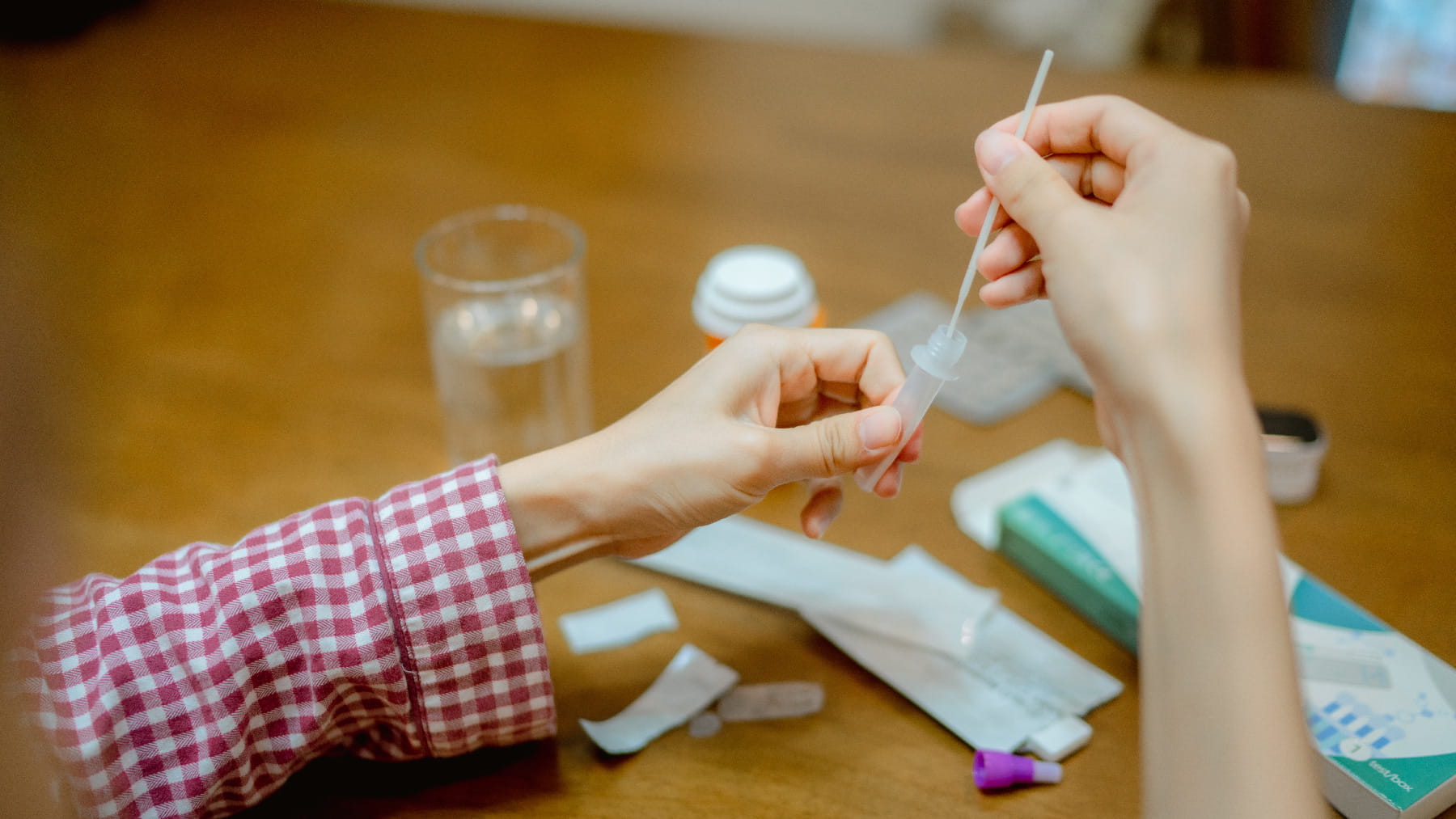At-home rapid tests: Should we swab our throats, too, for COVID-19?

Editor’s note: As what we know about COVID-19 evolves, so could the information in this story. Find our most recent COVID-19 blog posts here, and learn the latest in COVID-19 prevention at the Centers for Disease Control and Prevention.
As the omicron variant of COVID-19 rapidly spreads and at-home rapid testing ramps up, many questions have arisen about rapid tests’ accuracy, methods and the value of their results.
In an effort to increase the sensitivity and accuracy of rapid test, one thing that’s been suggested on social media and elsewhere is to swab the throat in addition to the nose to detect COVID-19 infection. However, swabbing the throat isn’t typically recommended.
We should use at-home rapid tests (antigen tests) as instructed
The majority of at-home self-test kits approved by the Food and Drug Administration (FDA) require that we collect specimens from our noses. A few self-tests do require a saliva specimen.
Swabbing the throat and nose for a rapid self-test could potentially increase test sensitivity — most viruses replicate in both the nasopharynx (nose) and the oropharynx (part of the throat at the back of the mouth), especially in people who have a sore throat. But if the test instructions don’t say to swab the throat, that means the test manufacturer and the FDA haven’t studied the test’s accuracy or efficacy in that way.
COVID-19 tests should be used as authorized, including following their instructions for use regarding obtaining the sample.
Safety concerns when swabbing the throat
With the at-home rapid tests approved for collecting the nose specimen, the FDA has “noted safety concerns regarding self-collection of throat swabs,” which can harm a patient if done incorrectly. Furthermore, doing this could contaminate the specimen. Self-collection of throat swabs is more complicated and should be collected by a trained professional when needed.
The best way to perform an at-home rapid test for COVID-19
Read through test kit instructions and be sure you understand what specimen (nose or saliva) is required before opening the test kit. Once the specimen is collected, use it as described to complete the self-test. The manufacturer might also provide other resources, such as quick reference guides or instructional videos, to help you perform the test correctly.
(See the CDC’s videos on How to Use a Self-Test and How to Interpret Self-Test Results.)
Even with the omicron variant, the nose and saliva provide good specimens for testing
Swabs from the nose (nasal, nasopharyngeal) have been the standard for COVID-19 screening and diagnosis since the virus was discovered. We’ve seen various COVID-19 variants emerge, and we’re studying changes in the patterns of viral shedding and the resulting impact on diagnostic sampling methods. Although some saliva-based tests have been authorized and are commercially available, most currently accessible kits for health care use and for at-home self-testing rely on nasal swabs.
It’s important to understand that the clinical performance of COVID-19 tests hasn’t been established in all variants that are circulating, but the FDA and test manufacturers anticipate the tests to be reflective of dominant variants in circulation at the time and location of that test. It is possible that the accuracy of the test results can vary depending on the variants circulating, including newly emerging strains of SARS-CoV-2 (the virus that causes COVID-19) as they change over time.
The bottom line
Additional studies are needed to determine whether combining throat and nasal swabs would safely and effectively increase test sensitivity. Additional test kit modifications and specific instructions for use would need to be provided by test manufacturers after appropriate studies have been conducted and approved by the FDA.
It’s worth noting that the FDA said on Dec. 28, 2021, that preliminary data suggests that some rapid antigen tests may be less sensitive in detecting the omicron variant of the coronavirus. Omicron has an extraordinary number of mutations compared to previous circulating variants, so there’s a potential for false negative results with any test that detects SARS-CoV-2 — if the test was developed to detect a part of the virus’ genome that has since mutated.
However, the majority of manufacturers of both polymerase chain reaction (PCR) tests (those most often performed at many health care facilities, such as The Ohio State University Wexner Medical Center) and rapid antigen tests have said their tests can effectively detect the omicron variant of COVID-19.
Preeti Pancholi is the director of Clinical Microbiology at The Ohio State University College of Medicine and oversees microbiological diagnosis for The Ohio State University Wexner Medical Center, Ross Heart Hospital, Ohio State East Hospital and associated outpatient clinics.

